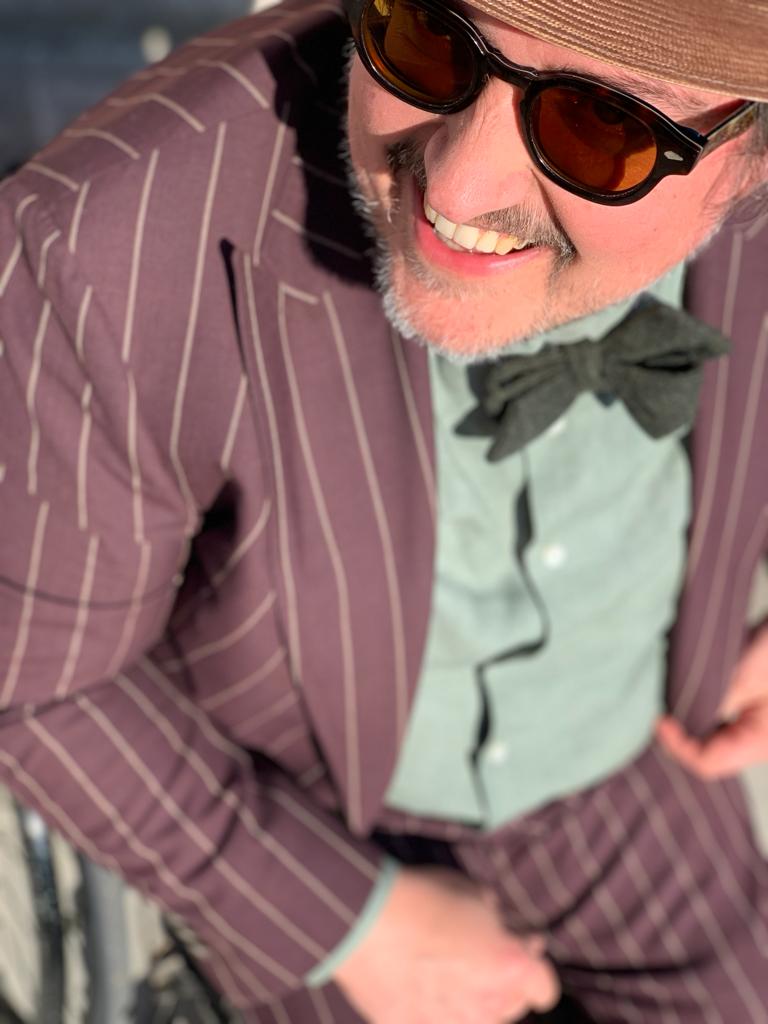I find it commendable and refreshing that experts like Hugo Jacomet and Bruce Boyer take the time and effort to historically frame sartorial discussions on terms like “Dandyism” and “Sprezzatura”. The Sartorial Talks video underneath is worth your time if you are truly interested in the context and the evolution of these terms. But what do those terms mean for a modern-day (wheelchair) gentleman?
Words have meaning, so you should choose them carefully. The Italian word sprezzatura first appears in Baldassare Castiglione’s 1528 tome “The Book of the Courtier”, where he defines it as “a certain nonchalance, to conceal all art and make whatever one does or says appear to be without effort and almost without any thought about it.” In the context of a court where everybody was wearing flamboyant attire trying to grasp attention of the powers that be to advance themselves this term has meaning: you had to stand out to get noticed, but not look like you were trying. I can grasp the transference of that concept to people like Gianni Agnelli (1921-2003) who embodied the principle of less is more with a twist to his classic suits and accessories. To attain true sprezzatura you must combine knowledge, experience, and confidence to develop your own style without necessary drawing attention to it.
Dandyism refers to a literary and artistic style of the latter part of the 19th century marked by artificiality and excessive refinement. It was an intellectual movement in which refinement was pushed to its extremes and adepts would not work to pursue the ultimate elegance. Holbrook Jackson captures the essence of Dandyism beautifully in his 1914 essay: “Your true Dandy looks upon his personality as a movement in the pageant of life, to be planned and arranged as carefully as a city in Utopia. He is, indeed, Utopia become man: his is a man in excelsis, man glorified and peacocked into something as beautiful…” Utopia is the key concept for me in this description and the reason why I fully agree with Hugo Jacomet that dandyism is no longer relevant in today’s sartorial world.
Beau Brummell (1778-1840) was a British exponent of the Dandy-movement, a character on which Christopher Breward made some very interesting remarks in his book The Suit for function and style. Breward’s observations pinpoint why Brummell is a reference today in men’s style beyond dandyism: “Thus there was perhaps an element of perfectionism, attention to detail and a functional correctness in Brummell’s dress that marked it out from the habits of others, but it was otherwise unremarkable. It was essentially through the confidence with which the man put the stark simplicity of his appearance on display that the distinctiveness of his sartorial behaviour emerged.” For me, this is the essence of sprezzatura and a current day sartorial journey rolled into one: dress with knowledge, experience and confidence.
For me knowing what sprezzatura and dandyism mean historically is important, but they do not apply to today’s sartorial gentlemen and certainly not if you are in a wheelchair. Because wearing a suit makes you stand out and there is nothing effortless about that. It is a deliberate choice to wear a suit and wearing it well supposes knowledge and confidence to pull it off.

Is there anything even more specific for a wheelchair gentleman? Yes, whenever I go outside, whatever I do, whatever I wear people stare. My nine-year-old son told me this weekend: “dad, I am finally getting used to the fact people stare at you.” Going out and blending into the crowd has never been an option for me, so if I wear a suit it gets noticed. I see people thinking: why do you bother? The answer is very simple: I feel good in a suit or jacket and a tie. I have been working on my personal style for 10 years and that effort will continue, but I cannot apply sprezzatura in today’s context because wearing a suit will never look like I just threw something together when the guy next to me is wearing a hoodie. What I can do is adhere to the principles underpinning sprezzatura: acquire knowledge, building experience and be quietly confident about what I have achieved. In that sense sprezzatura is different today because the knowledge, the experience and the confidence to pull of wearing a suit cannot be concealed. If you want to stare at me, you’re welcome, I’ll give you something to look at!
Sincerely Yours,
Jean-Christophe Hoste
Follow me on IG @jc_hoste or #wheelchairgentleman
